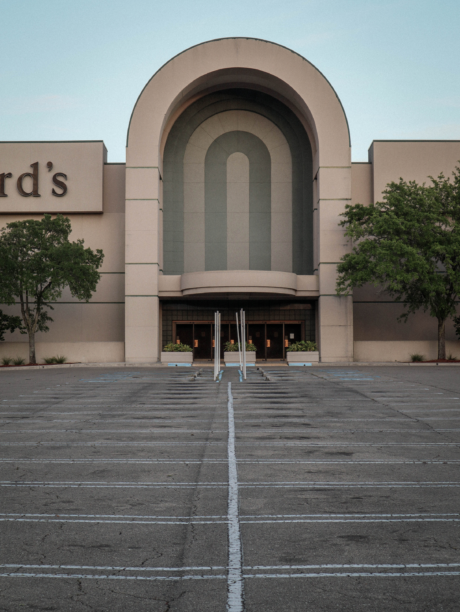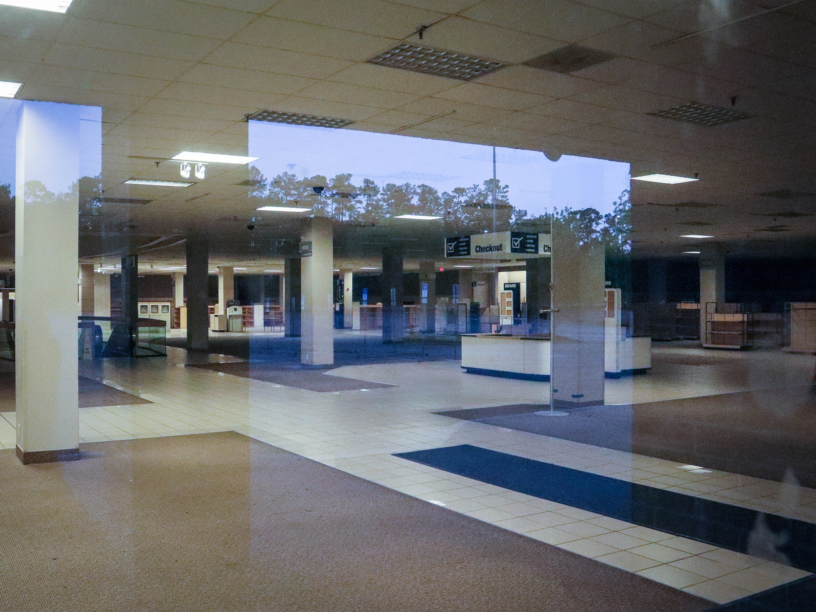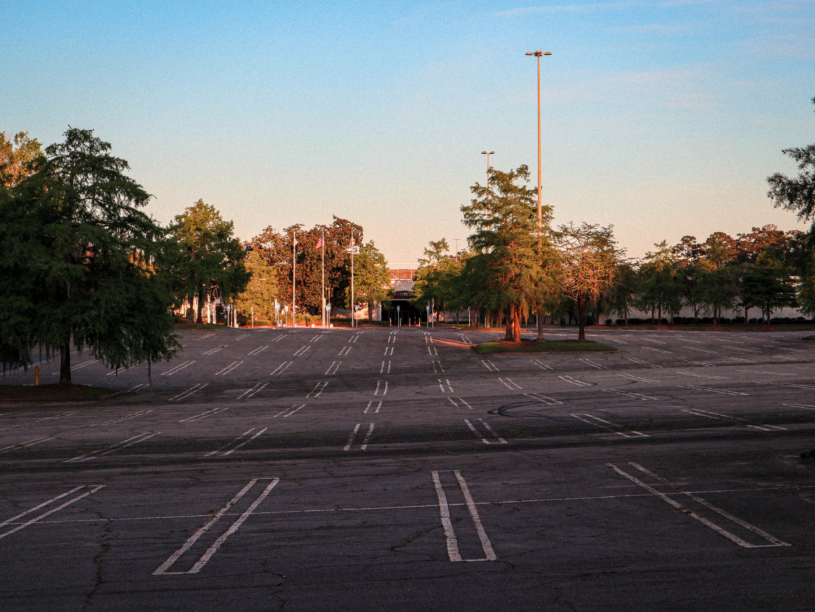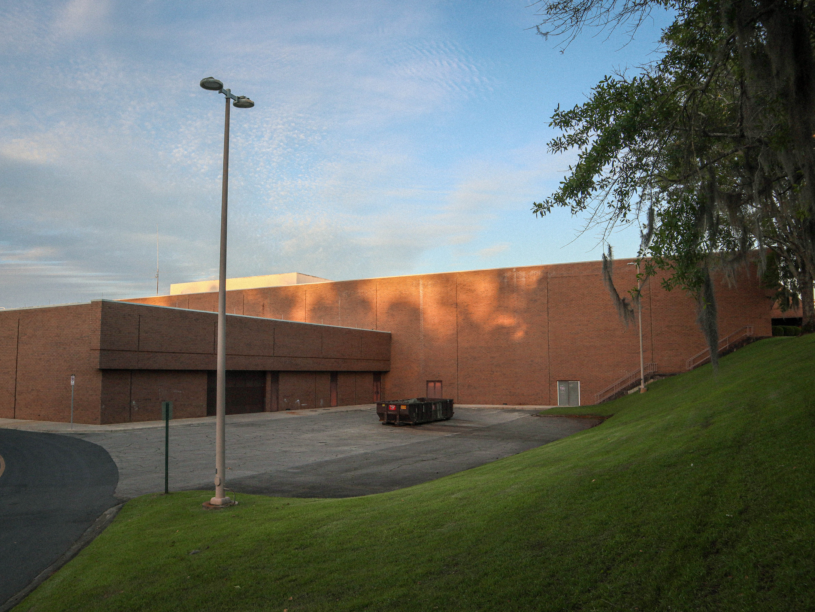[updated 9:36PST July 27, 2020]
Once, I received free tickets to a lecture and entertainment series at the local university. The tickets were for a talk by the essayist David Sedaris. I had read some of his work several years before, and I wouldn’t turn down free tickets. My girlfriend and I walked to the show through thick Florida air and arrived there a little bit sweaty.
Sedaris told witty, sentimental stories, joking with the audience of mostly old liberals. He poked fun at the narcissism of the “Instagram generation.” He told a story about how he had spent the day, as a visitor to my city. He needed a new pair of shoes and had walked to the nearby mall. He said that, like all American malls, it was a massive building with no one there. He called it empty, sterile and lifeless. He made a joke of not being able to remember the shoe store’s name and called it “Foot Event.”
“Foot Action,” I yelled at the stage. I knew the store, and I wanted to see if he would make a foot fetish joke out of its name, but I also wanted to yell at him. His bit about the mall and his smugness about youth culture had irritated me. I didn’t like David Sedaris, and I didn’t like youth culture either. But he was up there on stage up his ass basking in his literary affect, taking sips of water. I felt like he had insulted my mother.
Until recently, on a Saturday or Sunday, the mall was full of families, teenagers and couples. Sedaris hadn’t seen the mall, really, hadn’t seen how all kinds of people go there. He hadn’t smelled the food court or been numbed by the music and perfume at Macy’s. He didn’t rush to the mall during his high school lunch break, kill time there on rainy days or run into some friends. He didn’t go there high on oxycodone after getting his wisdom teeth removed.
It’s not as if I especially like the mall, and on a very stupid level, my politics don’t agree with malls. It’s OK if David Sedaris doesn’t know my mall, but to talk about my mall like he’s too good for it is another thing.
When Sedaris mocked the mall he had also mocked the normal shit and normal lives that happen there, just like they happen at the cleverly-named beach house he lives in. He had imposed his idea of the dead American mall on my mall, which to me was full of life and energy. Didn’t Boomers like Sedaris have fun at the mall when they were kids? Maybe he’s upset he’s not a kid anymore. My mall was a time travel machine; an eddy that kept safe public life and shared space that was swept away everywhere else.

There’s a Twitter account called “Uninteresting Photos.” It was a year-long experiment that ended in January 2020. The account’s owner, who says the account was inspired by depression, posted photos dug up from corners of the internet. The photos are of office complexes, conferences, strip malls, parking lots and bland apartments.
Uninteresting Photos posted a picture of a strip-mall storefront in my city. Considering how many uninteresting places there are in the world, this was like winning the lottery. I was excited, and I replied with a Google Maps street view image of the storefront to prove I knew its true location. I wrote that I was proud to see my hometown represented.
Maybe it’s the job of every writer to find uninteresting things interesting.
A year after I got angry at David Sedaris for making fun of the mall, I went there to see its corpse. It was closed, shut down “due to the COVID-19 pandemic.” I took some pictures and tried the doors to the Sears, which had been gutted years before the pandemic. The inside of the Sears was eerie and empty. One of America’s great department stores, God’s Will on Earth, hollowed out, probably by private equity and e-commerce.
The walls were still labeled in dark blue letters with the names of the different departments. I had to squint through the reflection of the evening sky to see inside. If I listened closely at the window, I could hear music playing on the store speakers. It was cheerful music. It sounded older than what they usually played in the Journey’s or the H&M, more like music Sedaris might have heard at a mall in the ‘80s. Some overhead lights were out, darkening the ghost of the power tools section or illuminating the checkout desk. The window glass was cool and flecked with dust.

Even empty of people, the mall was still a time machine. It was a time machine to the future, when things will be gone. If the job of writers is to find uninteresting things interesting, then the job of historians is to miss things even before they’re gone, and to be very sorry when at last they are. Now, the mall really is empty, sterile and lifeless. Is this what you wanted, David? Is this better? Are you having fun in your beach house whose name is an obstetrical pun?
What I mean is that you should go around trying to make even the mall interesting, and one way to do that is to be a historian. You can be a historian by imagining what a place was like before you got there. Go back 100 years, or 1,000, or stick to yesterday. I’m trying to remember something I read once, it would be perfect to put here. It was about seeing an old woman, and to really see her you would also understand what she looked like when she was 50, or 30, or a child. I think this is easier to do with some faces than others. You can apply the same technique to the mall.
Along with privacy, the environment and life outside the internet, there’s no question that malls are dying. The dying mall consciousness has been uploaded to the web and probed in videos and photo essays for Vice and WaPo. My town was unusual in having one that still drew crowds before the pandemic. I don’t think it will last much longer. The empty Sears is the engine of the time machine to the future. It’s seeing the little girl not as an old woman but as a coffin (spooky!).

There are two malls in my city. The second mall had the misfortune to die, be resurrected, and then die again. Rescuing the failing Tallahassee Mall was the pet project of developer Alex Baker. Baker grew up in the golden age of American malls. In 1982, he developed, leased and managed his first shopping center. In 2014, Baker took on the task of resurrecting Tallahassee Mall, an aging maze with echoey tile corridors, a Coldstone Creamery and a Burlington Coat Factory. His colleagues said the mall had become his baby, drawing his personal attention to everything from the color of the walls to the light fixtures.
Baker’s strategy for the dead mall was to leave the good parts and replace the bad parts with a fake Main Street, like a small-town shopping district. There was a central market where food vendors worked under high ceilings, and a music venue where my girlfriend saw Smash Mouth and drank too much in 2016. In the winter there was a potholed ice-skating rink that was the only place I ever ice-skated.
It didn’t work. The resurrection didn’t draw shoppers and so didn’t draw tenants. Baker died unexpectedly in 2017, on Mother’s Day. Without him the project was rudderless.
Before he died, Baker left his fingerprints on another part of Tallahassee. He was responsible for the Fallschase development: a planned suburban neighborhood on the red clay banks of a lake filled with alligators. The project failed. Baker built roads and cul-de-sacs in the dense woods, but nothing else.
I explored those empty roads through the woods once as a teenager. I rode my bike into a cul-de-sac. I imagined how the houses would’ve been ordered around the circle. I stood in the center of the circle, breathing hot Florida air. I thought I heard voices. They sounded like a mother and children welcoming a father home from work. I left, and found two of my friends sitting crosslegged in the middle of a vacant street. They had taken LSD, and they said they were happy to see me. It was their voices I had heard. I hadn’t expected to see my friends at all, and I was happy.

[Editor’s note: an earlier version of this story incorrectly identified David Sedaris as a Gen Xer. He is 63, and consequently a Boomer. Also, the name of the beach house is an obstetrical pun, not an abortion pun. We regret the errors.]






